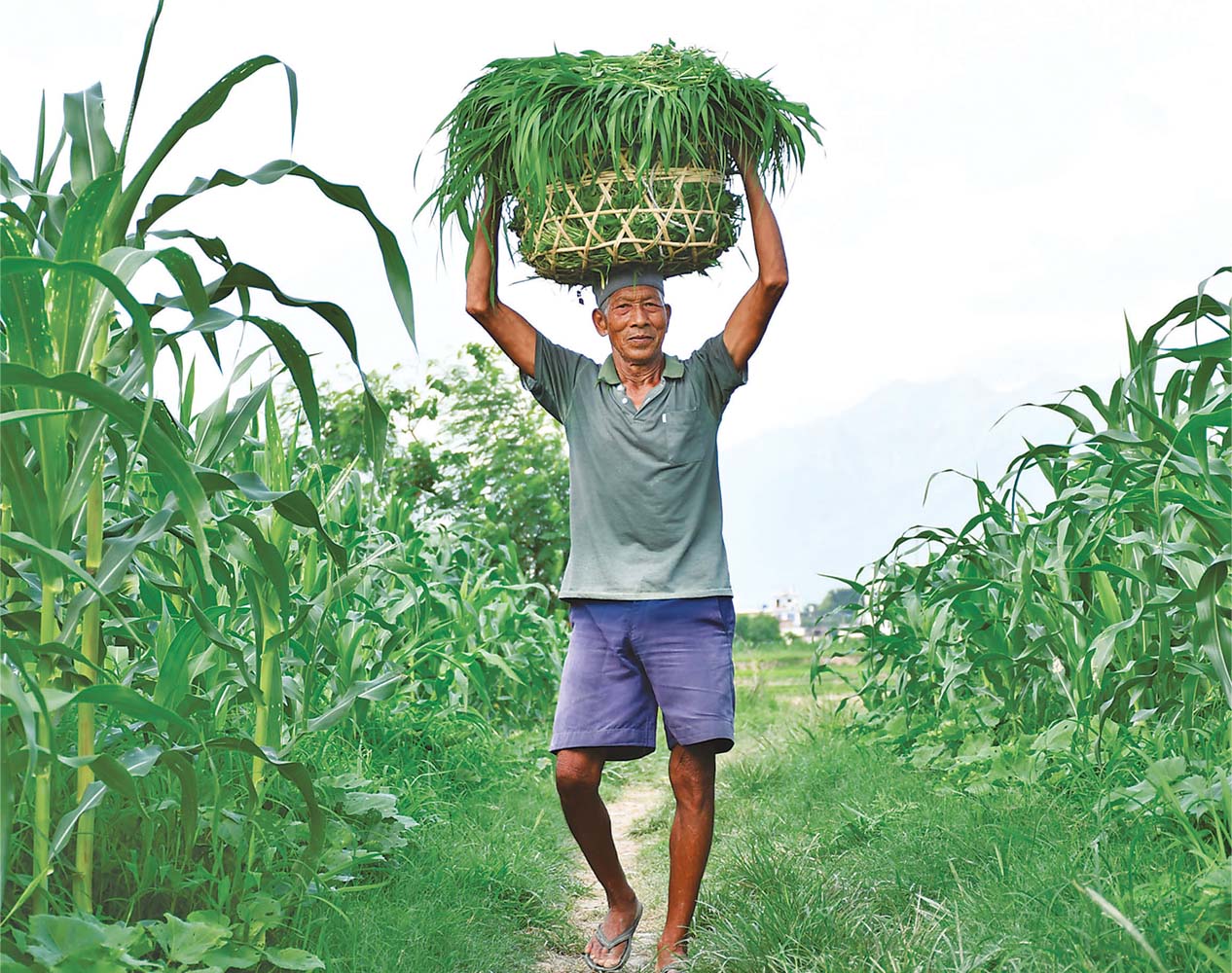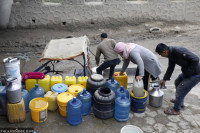Money
Patriarchal Nepal sees steep rise in female-headed households
Agriculture Census 2021-22 report, released on Thursday by National Statistics Office, shows 32.4 percent, or 1.33 million, households in the country are headed by women.
Sangam Prasain
An increasing number of female-headed households are emerging in Nepal as a result of economic downturns and mass exodus of males to foreign lands.
In 2011-12, female-headed households in Nepal, in which an adult female became the sole or main income producer and decision-maker, were just 19 percent.
After 10 years, according to the agriculture census report released on Thursday, female-headed holdings nearly doubled to 32.4 percent. This means 1.33 million women head households in Nepal.
The census shows that male-headed holdings are 2.79 million or 67.6 percent.
According to the census, there are 4.13 million farm holdings in Nepal, with 3.99 million people having land and 131,504 people without land.
“That was bound to happen,” said Badri Kumar Karki, director of the National Statistics Office, formally the Central Bureau of Statistics. “Males are going to the foreign countries to earn money, and females are the decision-makers at home.”
He said that the trend may continue as more and more Nepalis are leaving abroad in search of better opportunities.
Nepali migrant workers obtaining approval for foreign employment, excluding India, reached 774,976 in the last fiscal year.
There has been a steady increase in the number of holdings over the last 60 years. The first agriculture census done in 1961-62 showed that there were 1.54 million holdings in the country. The number had since grown to 3.36 million by 2001-02 and to 4.13 million by 2021-22.
In the six decades, the number of holdings has increased by 168 percent, with the area under holdings increasing by 32 percent.
The Agriculture Census 2021-22 report, released by the National Statistics Office, has revealed that 19.44 million Nepalis out of a population of 29.16 million depend on farming for their livelihood.
Among them, 9.54 million (49.1 percent) are male and 9.90 (50.9 percent) are female, said the National Statistics Office.
According to the census, agriculture households account for 62 percent of the total households in the country.
The average size of farm households was 5.4 persons in 2011-12, which has decreased to 4.7 persons in 2021-22.
The average size of agricultural landholdings has been decreasing each passing year.
According to the census, six decades ago, the average size of agricultural landholdings was 1.1 hectares, which dropped to 0.68 hectares in 2011-12 and further to 0.55 hectares in 2021-22.
The census shows that 45 percent of families meet their annual food expenses from farm earnings, which was 40 percent in the last census.
The census has revealed that the number of farmers taking loans for agricultural purposes has dropped sharply.
As per the latest census, 11.7 percent borrowed money for agriculture purposes, which was 21.8 percent in the last census.
Only 483,208 farmers (4.4 percent) have crop insurance and only 308,512 farmers (7.5 percent) received state subsidies in the respective year, the census shows.
Farmers engaged in fisheries numbered 42,008, and there are 48,763 ponds across the country occupying 10,383 hectares.
The census showed that 17,554 farmers are engaged in mushroom farming, 510,414 in apiculture or rearing honeybees, and 10,375 in floriculture.
Of late, tunnel farming has flourished. As per the census, 97,174 farmers are involved in tunnel farming on 4,659 hectares.
Nearly half of the population of farmers know about climate change issues, with 43.7 percent saying that they are aware of climate change and have reported crop damage caused by climate change.
According to the census, out of the 2.21 million hectares of land under holdings, 1.42 million hectares are classified as wetland and 788,429 hectares as dry land.

Most of the agriculture holdings in Nepal are operated by the owners themselves.
In 2021-22, about 81.6 percent of the land holdings were fully owned, 1 percent fully rented, 0.2 percent had other types of tenure with unidentified ownership, and 16.8 percent were either partly owned or rented.
The census says that out of the 2.21 million hectares of land occupied by agriculture holdings, 2.12 million hectares (95.6 percent) are used for agriculture, 80,700 hectares are covered by forests and other wooded lands, 12,900 hectares are used for ponds, and the remaining 3,200 hectares are other lands not elsewhere classified.
Nepal's agricultural lands have decreased by 300,000 hectares in the last 10 years, resulting in a decline in both temporary and permanent crops.
Agro expert Hari Dahal said there is no investment in the agriculture sector, the rate of return from agriculture is poor and there is a rapid rise in urbanisation.
“Farming holds no charm for youths and all these issues entail that the agriculture sector is one of the most problematic sectors.”
In the last 10 years, areas used for paddy cultivation have decreased by 16 percent to 1.21 million hectares.
The census shows that 1.73 million hectares are used for temporary crops and only 145,400 hectares are used for permanent crops.
According to the census, the total area of irrigated lands has reached 1.20 million hectares, with 72.7 percent of these lands being irrigated throughout the year.
The percentage of irrigated lands has increased, with 54.5 percent of the lands being irrigated in 2021-22 compared to 52 percent in 2011-12.
The census says that 56.3 percent of paddy farmers still use local seeds, with only 27.2 percent using improved seeds and 16.5 percent using hybrid seeds.
In the last 10 years, hybrid seed use has increased from 5.4 percent to 16.5 percent. The census says that half or 47.9 percent of the farmers in the country grow vegetables.
The number of livestock and poultry in the country has been on the rise, except for cattle, buffaloes and sheep.
Over the decade, buffalo numbers decreased from 3.17 million head to 2.92 million head, while goat and chyangra numbers increased from 10.99 million head to 14.24 million head.
Pig numbers increased from 818,000 to 1.35 million. Sheep numbers, however, decreased from 608,000 to 478,000.
The number of chickens has grown significantly due to commercialisation. The census shows that chicken numbers increased from 26.26 million to 45.11 million. Duck numbers increased from 430,000 to 1.32 million.
The census report shows that there are 74,591 permanent workers employed in 39,190 agriculture holdings. The majority of workers are male, with female workers making up only 41 percent of the farm workforce.
The report shows that out of the 4.13 million agricultural holders, 25.7 percent belong to the age group of 35-44 years.
The census shows farm mechanisation has been on the rise. The number of farmers using tractors has increased sharply reaching 1.63 million units in 2021-22 from 845,000 units in 2011-12.
Similarly, 471,260 farmers are using power tillers, and there are 117,991 power tillers in operation. The traditional use of iron ploughs has dropped to 509,825 in 2021-22 from 856,283 in 2011-12.




 9.12°C Kathmandu
9.12°C Kathmandu















